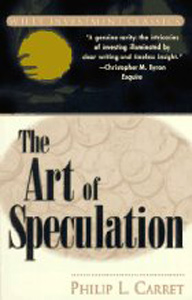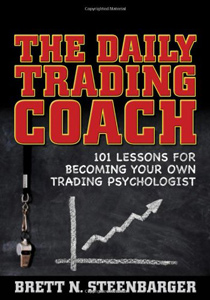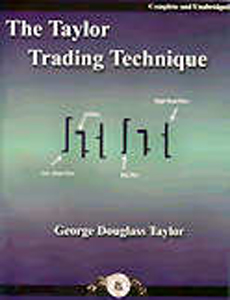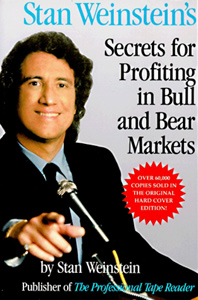The Art of Speculation
The Art of Speculation is laden with insights and studies that are as fresh today as newly cut grass . . . a joy to read. The topics covered were timeless in 1931. and written in 24-carat prose. from the Foreword by Victor Niederhoffer A classic in every sense of the word, The Art of Speculation has been heralded by investors, both past and present, as a true standout in the field. Written by Philip Carret a Wall Street legend long considered a leading thinker in basic value investing this timeless work is as vital a part of finance literature today as it was when it first appeared almost seventy years ago.
Acclaim for The Art of Speculation (Wiley Investment Classic) Philip Carret has been practicing the art of investing longer than anyone. In the current frothy stock market environment it is helpful to read his insights into the Great Crash of 1929 to see if there are useful parallels. Beginning investors will find The Art of Speculation instructive and students of the market will learn much about what investing was like seven decades ago before computers, derivatives, junk bonds, discount brokers, and hedge funds. His Twelve Commandments for Speculators is good advice for us all. Byron R. Wien, Managing Director/U.S. Investment Strategist Morgan Stanley & Co. Inc.
A genuine rarity: the intricacies of investing illuminated by clear writing and timeless insight. The chapters on how to read a balance sheet and income statement are classics. No investor should even consider dabbling in the frantic IPO market of today without having read them first. Christopher M. Byron Esquire.
Positive Review of Book
This book was written back in 1930 but there are still a lot of gems to be found, especially for beginning investors. What the author describes as speculation is really, today, just investing that is a little more risky than buying a stock for the dividends. He describes how to interpret financial statements, how the market works, and what to look for in industrial and railroad stocks. He also discusses trading in unlisted securities and investing in options. Sure the book is old, but it is still very valuable.
Negative Review of Book
Has some applicable info, but a lot of its outdated like reading the tape. For the seasoned vet I can't find a reason to buy this. For someone just starting out, you could learn something but there are many more books out there that are newer and more revelant. I personally like any of William O'Neils books for long term investing, as for day trading I like the work of John Person who has two books available last time I checked. (Both good reads)
Author Biography
PHILIP L. CARRET has been a bond salesman, financial journalist, and mutual fund manager of extraordinary vision and ability. He is the founder and Chairman of Carret & Co., and Chairman Emeritus and Director of the Pioneer Group. In 1924, he launched The Fidelity Investment Trust with $25,000 of his own money. Known today as the prestigious Pioneer Fund, it boasts over $2 billion in assets.
Table of Contents
- What Is Speculation?
- The Machinery of Markets
- The Vehicles Of Speculation
- Market Movements - Ripples and Waves
- The Tides of Speculation
- Forecasting The Major Swings
- The Lifeblood Of Speculation
- Technical Factors vs. Economic Fundamentals
- The Short Sale
- What Is A Bull Market?
- How To Read a Balance Sheet
- How to Read an Income Statement
- Rails and Utilities - Victims or Beneficiaries of Regulation?
- The Analysis of Industrial Stocks
- The Romance of Buried Treasure
- Profits in Financial Surgery
- Trading in Unlisted Securities
- Options and Arbitrage
- When Speculation Becomes Investment
Discover more Trading books at BookofTrading.com!
- How to Trade Forex and Gold Options
- How to Trade the Gold Price and Profit!
- Forex Trading the EUR/USD Pair € EURO and $ US Dollar
- How to Trade Stock Market Indices S&P500
- How to Trade Crude Oil
- Forex Trading Psychology
- What Are Broker Recommendations?
- Free Tickets to Trading & Investing Seminar & Expo ($18) Brisbane 2013
- Stock Calc App
- All About Warrants
- Introduction to Exchange Traded Funds
- Introduction to Exchange Traded Funds: Features
- Introduction to Exchange Traded Funds: Domestic ETFs
- Introduction to Exchange Traded Funds: International ETFs
- Exchange Traded Commodities
- Australian Stock Scan
- Australian Online Share Trading
- List of Trading Books
- Interesting Thoughts about the Australian Dollar
- What's the Meaning of Hawkish?
- Do You Know How To Use the P/E Ratio
- Trading, Religion and Politics - Do They Have Anything in Common?
- Shares that are Volatile that Double and Half in the Short Term
- Telstra (TLS) T3
- Margin Call by E-mail
- The Cost of Holding a Position
- Lack of Disclosure: Compensation from ASX Listed Company
- Unrealistic Returns and Benchmarks
- CMC Markets Down
- Quality versus Quantity Forex Trading
- Woolworths 1H Sales $30.7bn up 3.2%
Date added 31-01-2013 - ASIC Fines CommBank's CommSec
Date added 25-09-2012 - Industry Super Network Calls to Ban High Frequency Trading (HFT)
Date added 22-09-2012 - NAB Launches Online Share Trading Platform
Date added 19-09-2012 - Reserve Bank of Australia Says 23 Countries Holding AUD
Date added 18-09-2012 - Australia Post Digital Mailbox
Date added 10-09-2012 - Winners and Losers of Trading for Week 2
Date added 16-01-2012 - 2012's First Week of the Best and Worst Traded Stocks
Date added 09-01-2012 - 2011's Last Best and Worst Traded Stocks
Date added 05-01-2012 - Best and Worst Pre-Christmas Traded Stocks
Date added 30-12-2011 - Trading Winners and Losers for Dec. 12-16
Date added 19-12-2011 - Best and Worst Traded Stocks for Dec. 5-9
Date added 13-12-2011 - Top 3 Best and Worst Traded Stocks
Date added 05-12-2011 - ASX Glitch Trading Halt
Date added 27-10-2011 - Worst Trade Stocks (and the Best)
Date added 06-08-2011
Top 150 Public Companies Listed on the Australian Stockmarket as at 29/05/2009
- BHP Billiton
- Westpac Banking Corporation (WBC)
- Commonwealth Bank of Australia (CBA)
- National Australia Bank (NAB)
- Telstra (TLS)
- ANZ
- News Corporation (NWS)
- Woolworths Limited(WOW)
- Woodside Petroleum Limited (WPL)
- Rio Tinto
- Westfield Group (WDC)
- Westfarmers Limited (WES)
- QBE Insurance
- CSL
- Newcrest Mining Limited (NCM)
- Origin Energy Limited (ORG)
- Santos Limited (STO)
- AMP Limited (AMP)
- Macquarie Group (MQG)
- Foster’s Group Limited (FGL)





